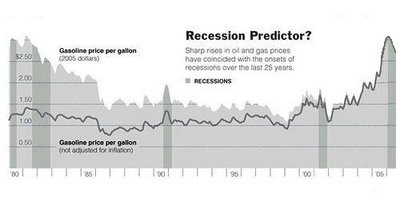Recession

A significant decline in activity spread across the economy, lasting longer than a few months. It is visible in industrial production, employment, real income, and wholesale-retail trade. The technical indicator of a recession is two consecutive quarters of negative economic growth as measured by a country's GDP.
Recession is a normal (albeit unpleasant) part of the business cycle. A recession generally lasts from six to eighteen months.
Interest rates usually fall in recessionary times to stimulate the economy by offering cheap rates at which to borrow money.
After nearly a year of falling commodity prices, rising unemployment, increasing personal and corporate bankruptcies, falling stock prices, and declining public confidence, the National Bureau of Economic Research made it official and on November 26, 2001, declared a recession. The announcement wasn't a surprise to hundreds of thousands of people who had lost their jobs and an even greater number of investors who had experienced substantial losses in the stock market. The bureau's Business Cycle Dating Committee of six academic economists determined the recession commenced in March 2001, when economic activity stopped growing. Although many economists use declines in gross domestic product to define a recession, the NBER Dating Committee examined employment, industrial production, manufacturing and trade sales, and personal income. The country's last previous recession lasted eight months and ended in March 1991. The subsequent ten-year period of uninterrupted growth between March 1991 and March 2001 was the longest in America's history.


0 Comments:
Post a Comment
<< Home